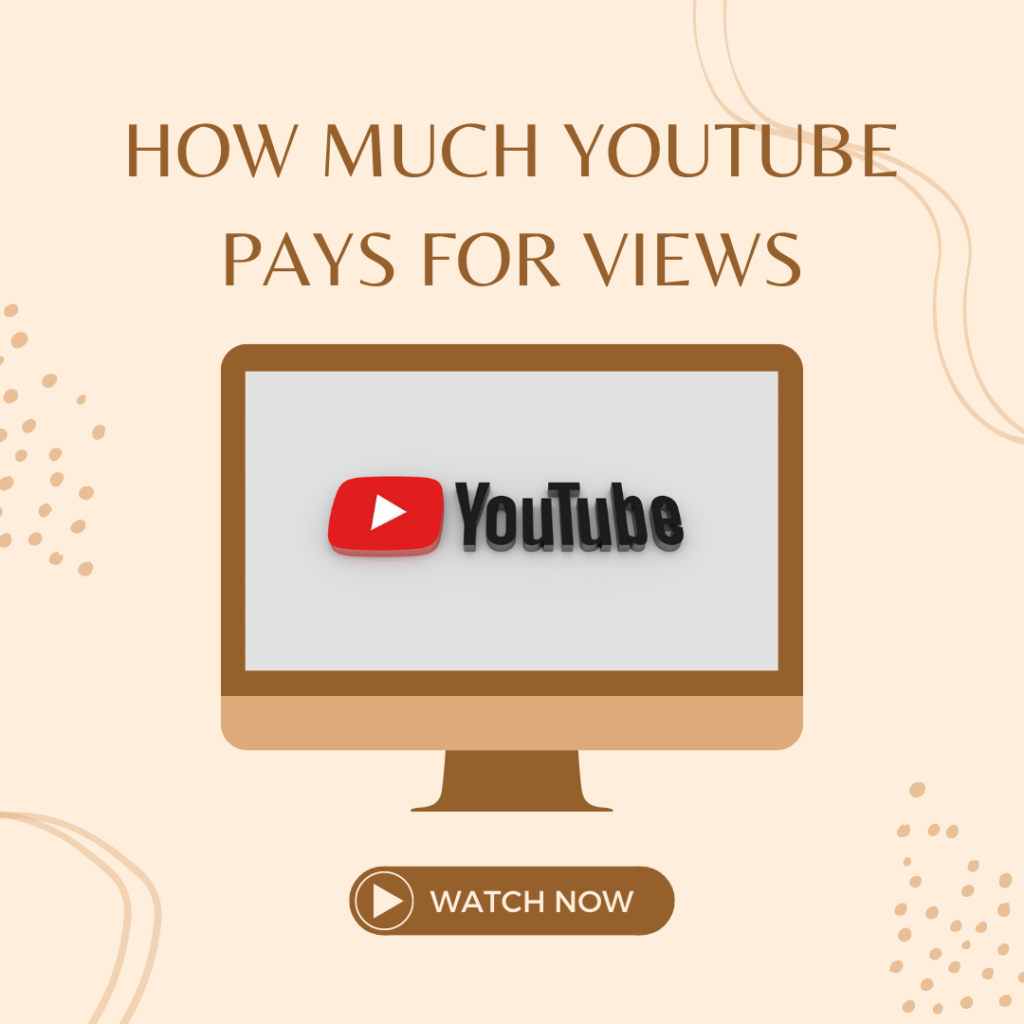YouTube has become a massive platform for content creators, attracting millions of viewers every day. With such a vast audience, many creators wonder how much money they can make from their videos. These days, people are now looking for stats on how much youtube pays per view for every 1k, 10k, 100k, 1 million, and even 1 billion views.
One thing is clear. More and more people are looking to become YouTubers.
In this article, we’ll delve into the fascinating world of YouTube earnings and shed light on the factors that determine how much YouTube pays for views. So, let’s dive in and explore the ins and outs of YouTube revenue!
Exploring the Revenue Model
To understand how YouTube pays for views, we need to explore its revenue model, which primarily revolves around advertising. YouTube generates revenue by displaying ads on videos, and creators receive a portion of this revenue based on several factors.
The average YouTube pays per view for an ad view is between $0.01 and $0.18. This means that a YouTuber can make around $18 for every 1,000 ad views and $3 to $5 for every 1,000 video views.
Let’s delve into each aspect of the payment process:
1. Ad Formats and CPM Rates
YouTube offers various ad formats, including display ads, overlay ads, skippable video ads, non-skippable video ads, and more. The revenue generated from each ad format varies, as advertisers bid on placements through CPM (Cost Per Mille) rates. CPM rates refer to the cost an advertiser pays per 1000 ad impressions.
The higher the CPM rate, the more a creator can earn per view. Check out this video to learn how to increase your Youtube CPM and RPM revenue:
2. Ad Engagement and Viewer Behavior

Engagement plays a crucial role in YouTube earnings.
Creators who keep their viewers engaged with longer watch times, higher retention rates, and increased interaction (likes, comments, shares) often receive higher ad revenue.
YouTube’s algorithm rewards engaging content by promoting it to a broader audience, which can lead to more views and, subsequently, higher earnings.
3. Geographic Location of Viewers

The location of your viewers can significantly impact your YouTube revenue.
Advertisers might be willing to pay more to target specific regions or countries, leading to varying payment rates based on the geographic location of your audience.
Here are the top 10 locations that have the highest Youtube ad revenue.
4. Target Audience and Niche
Advertisers are more likely to bid higher on ads that align with their target audience and niche. Creators producing content in popular or niche categories that attract valuable demographics often enjoy better-paying ads.
5. Advertiser Demand and Seasonality
Advertiser demand fluctuates throughout the year, affecting ad rates and, consequently, your earnings. Some seasons or events might see a higher demand for advertising, leading to increased CPM rates and potential revenue spikes.
Unraveling the YouTube Payment Structure
Now that we’ve explored the factors influencing YouTube payments, let’s take a closer look at the payment structure and how creators receive their earnings.
YPP and Monetization Eligibility
To be eligible for earnings through YouTube, creators must join the YouTube Partner Program (YPP). To qualify for YPP, your channel needs to meet specific requirements, including:
- Minimum of 1,000 subscribers
- 4,000 watch hours in the last 12 months
- Complying with YouTube’s community guidelines and policies
Once your channel is eligible and you’re part of the YPP, you can monetize your content and start earning from eligible videos.
Revenue Share with YouTube
YouTube shares a percentage of its advertising revenue with creators. The exact revenue share depends on various factors, but in general, creators receive around 55% of the revenue generated from ads displayed on their videos. The remaining 45% goes to YouTube.
YouTube AdSense and Payments
Creators need to link their YouTube channel with an AdSense account to receive payments. AdSense is Google’s advertising platform that manages payments and facilitates revenue distribution to creators. You can set up your payment details, choose payment methods (e.g., direct deposit, wire transfer), and select payment thresholds through your AdSense account.
Factors Affecting Payment Rates
It’s essential to recognize that the payment rates can vary significantly based on factors we discussed earlier, including ad formats, viewer behavior, location, niche, advertiser demand, and seasonality.
Frequently Asked Questions (FAQs)
How much does YouTube pay per 1000 views?
YouTube’s payment per 1000 views, often referred to as CPM, is not fixed and can range from a few cents to several dollars. It depends on various factors like ad formats, viewer demographics, and engagement levels.
Do YouTube creators earn more from longer videos?
Not necessarily. While longer videos might lead to increased watch time, which can positively impact earnings, the content’s quality and audience engagement play a more significant role in determining revenue.
Can YouTube creators earn from views in all countries?
Yes, YouTube creators can earn from views worldwide. However, the revenue may vary based on the geographic location of the viewers and the advertiser demand in those regions.
How often do YouTubers get paid?
YouTube creators typically receive payments on a monthly basis. However, you need to reach the payment threshold, which varies by country and payment method, before receiving your earnings.
Are there other ways for YouTubers to earn money besides ad revenue?
Yes, besides ad revenue, creators can earn money through channel memberships, merchandise sales, sponsored content, and crowdfunding platforms like Patreon.
Can copyright claims affect YouTube payments?
Yes, copyright claims can impact revenue. If your video contains copyrighted content owned by someone else, they may receive a portion of the ad revenue generated from your video.
Is Youtube pays for Views
Understanding how much YouTube pays for views is essential for creators aspiring to make a living from their content. YouTube earnings depend on various factors like ad formats, viewer engagement, geographic location, and more. Creators should focus on producing engaging, high-quality content and building a loyal audience to maximize their YouTube revenue potential.
Remember, while YouTube can be a lucrative platform, success requires dedication, consistency, and a genuine passion for creating content that resonates with viewers. So, keep producing amazing videos, and who knows? You might become the next YouTube sensation!





